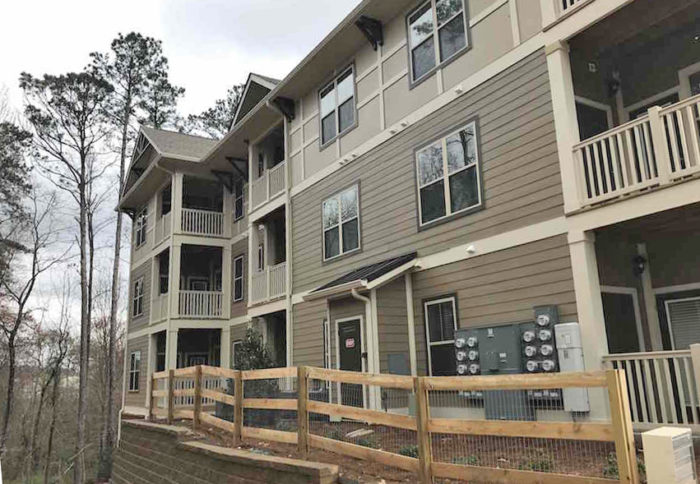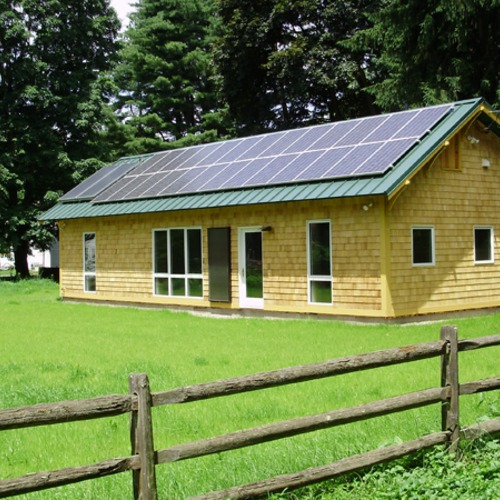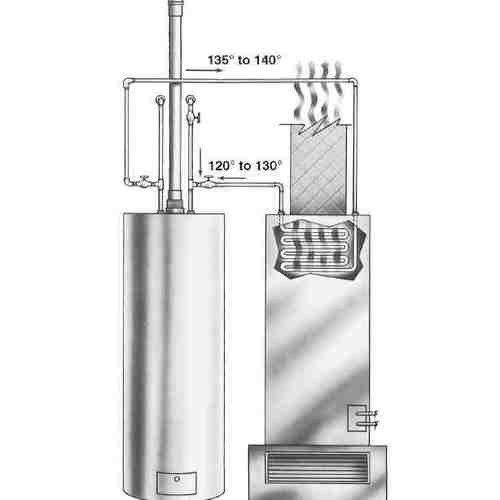
Image Credit: Energy Vanguard
I found out last month that the Air Conditioning Contractors of America (ACCA) is working on a new design manual. You certainly know of some of their other manuals: Manual J, Manual S, Manual D, Manual T… maybe even Manual P. They have quite a few others as well (H, Zr…) but now they’re working on one that will address a part of the market we encounter more and more often. And that would be low-load homes.
ACCA put out a call for volunteers to work on the manual in the spring of this year. (Applications were due in April, so it’s too late to apply now.) The objectives of the new manual, at least as specified in the call for volunteers, are:
- Defining low-load homes’ characteristics (i.e., low infiltration, sealed-combustion appliances, ducts in conditioned space, low CFM exhaust fans, etc.).
- Resolving ventilation requirements (for occupant health and safety) while maintaining moisture control.
- Addressing ancillary dehumidification equipment for humid locations.
- Offering air distribution strategies for occupant comfort; especially problematic when a 2,000 square foot home (and larger) may only need one-ton of air conditioning (hence, only 400 cfm of total airflow is available).
1,500 square feet per ton of cooling
At the ASHRAE conference in Houston, I spoke with someone who’s on the task force and was told they’re defining a low-load home as a house that has a house-size-to-load ratio of 1,500 square feet per ton or greater. That sounds about right to me. At the low end, that means a 2,000 square foot house would need only about 16,000 BTU per hour of heating or cooling capacity. That’s an air conditioner or heat pump smaller than 1.5 ton!
And that’s just the starting point for low-load homes. We’ve done load calculations for homes that are in the 2,500 to 3,000 square feet per ton range. (See my 2016 article with data from our results.) Here we’re talking about a 2,000 square foot home that needs less than a ton of cooling. As the objectives above point out, heating or cooling 2,000 square feet with 400 cubic feet per minute (cfm) of air flow is a challenge.
This is an important issue because manufacturers have been slow to make low-capacity equipment for low-load homes. Yeah, I know what some of you are thinking: Why should manufacturers make smaller equipment since low-load homes are just a tiny niche in the larger market?
Condos and apartments have low loads
Ah, but that’s not really true. Low-load homes may be a tiny niche among single-family detached homes but not when you get to multifamily homes (apartments and condos). Because of all the adiabatic walls, floors, and ceilings (i.e. parts of the building enclosure with no temperature difference and thus no heat flow across them), many multifamily dwelling units hit that low-load threshold of 1,500 s.f./ton simply by meeting code. And to make it even worse, they’re smaller and thus need smaller equipment — even when they’re not that efficient.
Back in 2012, Professor John Straube gave a full-day presentation on mechanical systems for low-load homes at Building Science Corporation’s Experts’ Session. He’s a Canadian and gave only a number for heating, but he defined a low-load home as one having a peak heating load of 15,000 to 30,000 BTU/hour. Most code-compliant multifamily dwellings would be there or lower.
Homes meeting the Passive House standard have low loads, too
Passive House is the ultimate low-load home program. They’re all about increasing the insulation and airtightness while decreasing the heat transfer through thermal bridges. Their requirements result in homes with heating and cooling loads in the range of 2,500 to 3,000 s.f./ton.
The German Passivhaus program’s peak heating load limit is 3.2 BTU/hour/s.f. Converting to s.f./(12,000 BTU/hour) yields 3,750 s.f./ton. (One ton of heating or cooling equals 12,000 BTU per hour.) I believe the PHI peak cooling load is the same with an allowance for dehumidification.
PHIUS peak load limits vary by location (since they believe one size does not fit all). Peak heating load thresholds vary from less than 2 BTU/hour/s.f. to about 7 BTU/hour/s.f. Those numbers convert to 1,700 s.f./ton to 6,000 s.f./ton.
The PHIUS peak cooling loads are specified two ways. There’s one limit for the Passive House calculations and a different limit for the Manual J calculations. In Anchorage, Alaska, for example, those numbers are 2.6 BTU/hour/s.f. (4,615 s.f./ton) and 3.7 BTU/hour/s.f. (3,243 s.f./ton) respectively. In Scottsdale, Arizona, the numbers are 7.9 BTU/hour/s.f. (1,519 s.f./ton) and 11.3 BTU/hour/s.f. (1,062 s.f./ton).
Here in the Atlanta area, the numbers are 4.8 BTU/hour/s.f. (2,500 s.f./ton) and 6.9 BTU/hour/s.f. (1,739 s.f./ton). (Here’s the link to the PHIUS map should you want to check it out.)
Heating and cooling with minisplit heat pumps
In our HVAC design work at Energy Vanguard, our clients often end up going with something other than conventional equipment for the homes with really low loads. Ducted and ductless minisplit heat pumps, mostly Mitsubishi, are the standard choice in those cases. (Disclosure: Mitsubishi is an advertiser in the Energy Vanguard Blog.)
In the world of green building, we talk about low-load homes a lot. We know it’s possible. We’ve been proving it for a long time now. But we’ve been a small niche in the market. With the pressures of improving energy codes, accelerating climate change, and increasing multifamily construction, low-load homes are making their presence known. That the HVAC contractors’ trade association, ACCA, is working on a low-load homes manual proves it.
Allison Bailes of Decatur, Georgia, is a speaker, writer, building science consultant, and the author of the Energy Vanguard Blog. You can follow him on Twitter at @EnergyVanguard.
Weekly Newsletter
Get building science and energy efficiency advice, plus special offers, in your inbox.














2 Comments
Dream on...
ACCA's Manual implementation in the industry is a joke... If ACCA can't or wont make sure most of their members use the manuals correctly and stop defrauding the consumer with the manuals they have now, are they making us believe that a new manual will be followed correctly? I'll take bets now...
Like Armado I have my doubts
Like Armado I have my doubts any new manual will be followed. Still, there's hope, some HVAC contractors take a professional approach.
Based on the advice of a competent HVAC contractor, I had a 2 stage 3 ton unit and a modulating 60,000 BTU furnace in a prior house that was 3000 sqft. The house had 2x4 construction, fiberglass insulation, and R38 cellulose in the attic. It took extreme conditions, or returning from vacation, to see the AC in the second stage or higher stages on the furnace. That unit was downsized from a prior 4 ton unit and 100,000 btu furnace by a younger professional HVAC contractor who hadn't been in business very long but was smart enough to do a simplified manual j and was confident that 3 tons would be plenty. He was right, it was adequately sized, maybe even a bit oversized at that.
More recently, here in climate zone 5 just east of the Mississippi river, I received a bid for a 3 ton AC and 80,000 BTU furnace for a house under 2000 sqft. The plans specified R/60/40/20/10 "pretty good house" guidelines, and didn't have an excessive amount of windows, and those were under a healthy overhang facing south and specified as having a U value of under .2. The bid was from a well known local company with an excellent reputation. Later, I had my own ratings done, the manual S came in at 1.5 tons, and the heating load at 35,000 BTU, and we know that there's a good amount of safety margin built into those calculations which may not even be optimized for "low load" houses.
So, the new design manual could be useful for the few who are willing to follow it.
Log in or create an account to post a comment.
Sign up Log in